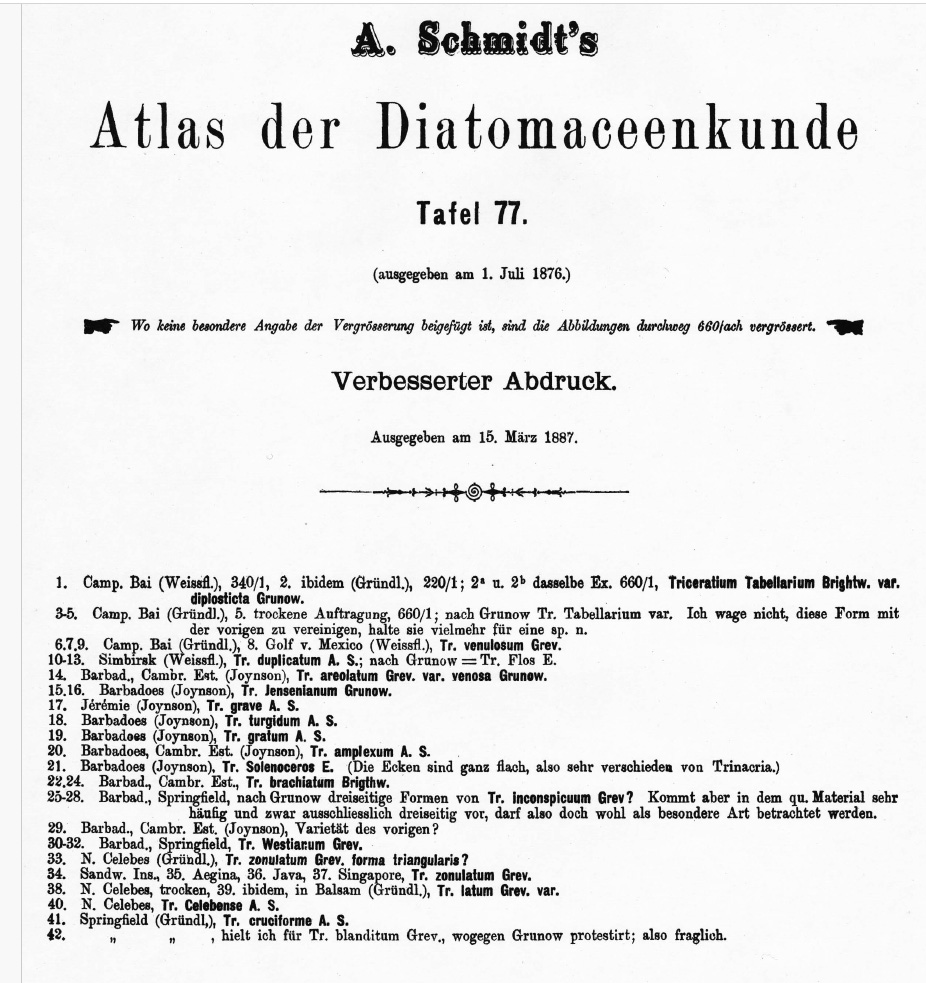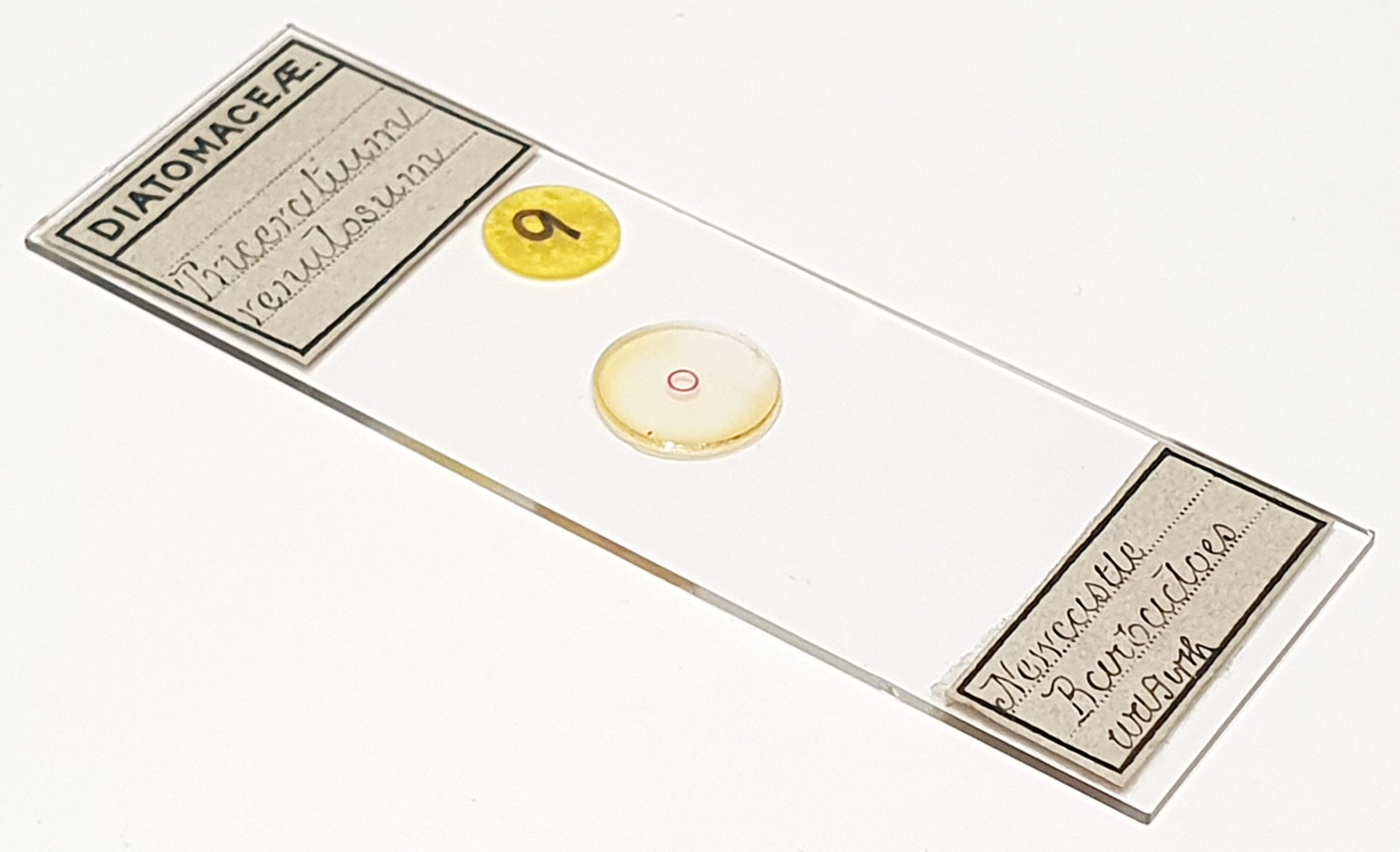




Note, there is a degree of speculation here on my behalf.
A slide of what I think is Triceratium grave from Newcastle, Barbados. Single example on the slide. However it is labelled as Triceratium venulosum. Prepared by WA Firth. Slide mountant shows a lot of degradation and crystallization. I’ll go into why I think this is not T. venulosum in a minute.
Olympus BHB microscope using 450nm LED light. 63x Leitz Pl Apo NA 1.40 objective, oil immersion. Olympus Aplanat Achromat condenser, oil immersion, brightfield lighting. 2.5x Nikon CF PL photoeyepiece. Monochrome converted Nikon d850 camera. 28 images stacked in Zerene (Pmax).
Why my concerns over the naming for this one? In Adolf Schmidt’s Atlas der Diatomaceenkunde, he shows drawings of T. venulosum on Plate 77, Figures 6, 7, 9. To me, the diatom on this slide does not look like what is shown in those images. However, just below them, still in Plate 77, is a diatom numbered 17 which is called T. grave. This looks much more like what I have on the slide, including the raised ‘Y’ shaped area in the middle and at the corners. Is it exact? No. Is it closer to the shape than T. venulosum? I think so.
The naming of T. grave is apparently very complex. I’ve been told by a diatom naming expert that this would likely now fall under the name Entiogoniopsis tabellaria. There is a comprehensive paper on this topic if you’d like to dig deeper – Entogoniopsis gen. nov. and Trilamina gen. nov. (Bacillariophyta): a survey of multipolar pseudocellate diatoms with internal costae, including comments on the genus Sheshukovia Gleser, by J Witkowski, PA Sims, NI Strelnikova, DM Williams, Phytotaxa, 2015, 209(1), 1-89. DOI:10.11646/phytotaxa.209.1.1.